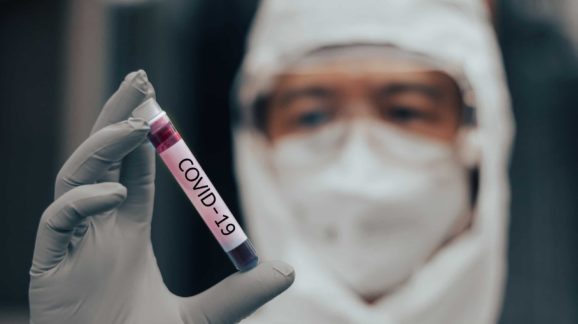Letter Confirms Wuhan Lab’s COVID-19 Leak was Funded by US Taxpayers
The origin of the SARS-CoV-2 virus that causes COVID-19 remains unclear, but recent revelations reinforce the likelihood that the true source was a lab leak from the Wuhan Institute of Virology.
A letter from Lawrence Tabak, the National Institutes of Health’s principal deputy director, to Rep. James Comer (R-Ky.) confirms that the NIH funded research at the WIV during 2018-2019 that manipulated a bat coronavirus called WIV1. Researchers at the institute grafted spike proteins from other coronaviruses onto WIV1 to see if the modified virus was capable of binding in a mouse that possessed the ACE2 receptors found in humans — the same receptor to which SARS-CoV-2 binds. The modified virus reproduced more rapidly and made infected humanized mice sicker than the unmodified virus.
Starting in 2014, the NIH’s National Institute of Allergy and Infectious Diseases, headed by Dr. Anthony Fauci, funded the New York-based research nonprofit EcoHealth Alliance with annual grants through 2020 for “Understanding the Risk of Bat Coronavirus Emergence.”
Total funding was $3,748,715. More than $600,000 of that went to the Wuhan lab. Three other Chinese institutions received funding as well. The principal investigator was EcoHealth Alliance president Peter Daszak, who, from the onset of the pandemic, has consistently campaigned in public and behind the scenes to convince people that SARS-CoV-2 did not come from the WIV but evolved naturally from animal-to-human transmission.
Tabak’s letter asserts that the modified virus becoming more virulent “was an unexpected result” and not “something that the researchers set out to do” — an odd claim, considering that the whole point of manipulating the virus was to investigate things that could make it more virulent.
The 2018 research mentioned in Tabak’s letter is similar to earlier WIV research, funded in part by the NIH, that modified viruses related to SARS to see if they could infect human cells.
Publications of these studies in 2017 and 2016 were the subject of a contentious Senate hearing in which Sen. Rand Paul (R-Ky.) pressed Fauci to admit that they constituted gain-of-function research, prompting Fauci’s denial and a statement that “NIH has not ever and does not now fund gain-of-function research in the Wuhan Institute of Virology.”
Many, but not all, virologists believe that the WIV experimentation qualifies as gain-of-function research.
Such research was originally defined as “any modification of a biological agent that confers new or enhanced activity.”
The National Science Advisory Board for Biosecurity proposed that only a narrower category, gain-of-function research of concern — research that could make a pathogen likely to spread and cause disease in humans — needs extra regulatory oversight.
Following laboratory biosafety incidents at government research facilities, the US paused funding on gain-of-function research with influenza and the SARS and MERS coronaviruses in 2014 to determine additional oversight. Researchers conducted the 2017 and 2016 studies discussed in the Senate while this pause was in effect.
In 2017, officials lifted the moratorium and replaced it with oversight guidelines for research using potential pandemic pathogens (PPP) — pathogens likely to be highly transmissible, capable of uncontrollable spread and able to cause significant morbidity or mortality in humans. A PPP resulting from the enhancement of the transmissibility or virulence of a pathogen is called an enhanced PPP (ePPP).
Tabak does not address whether the 2018 WIV experiments he cited in his letter were gain-of-function research. Instead, he maintains that NIH did not consider the WIV experiments so dangerous as to require special review and biosafety measures under the ePPP regulations adopted in 2017 “because these bat coronaviruses had not been shown to infect humans.”
But this is an unconvincing technicality. Other bat coronaviruses had already caused two deadly diseases, SARS and MERS, and other coronaviruses regularly circulate and infect humans to cause the common cold. It isn’t a stretch to think that a different coronavirus could become dangerous, too — particularly if used in an experiment designed to manipulate a virus that humans have never encountered to see if it could acquire the ability to infect humans.
After explaining why NIH didn’t review the proposal under its guidelines, Tabak’s letter claims that EcoHealth violated the terms of its grant stipulating that it had to report if its research increased the viral growth of a pathogen by tenfold — terms that NIH inserted “out of an abundance of caution and as an added layer of oversight.”
But the letter never explains why this stipulation was necessary.
This blame-shifting is not only unseemly but also may be untrue: EcoHealth maintains that it reported the results in its April 2018, Year Four report.
Read the full article at New York Post.
